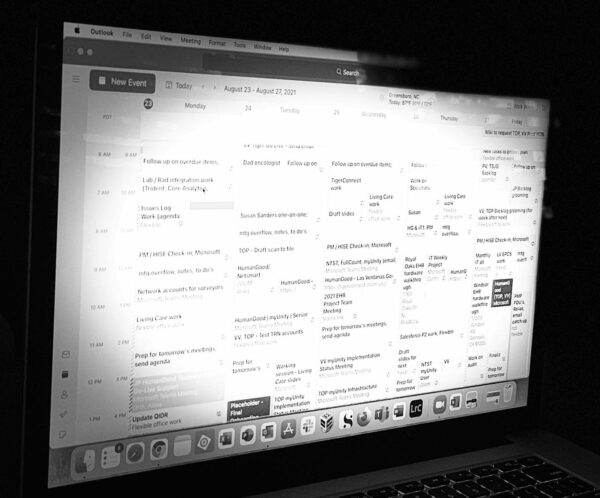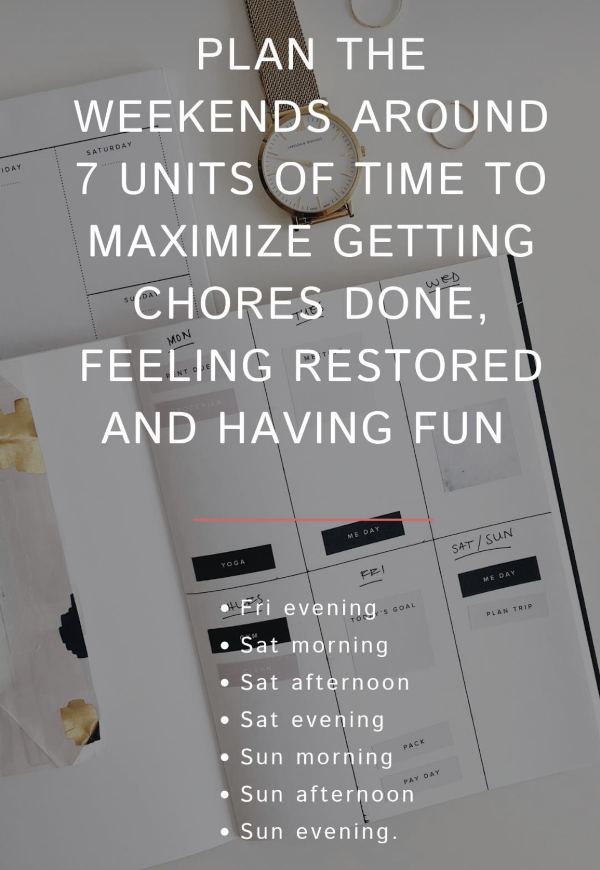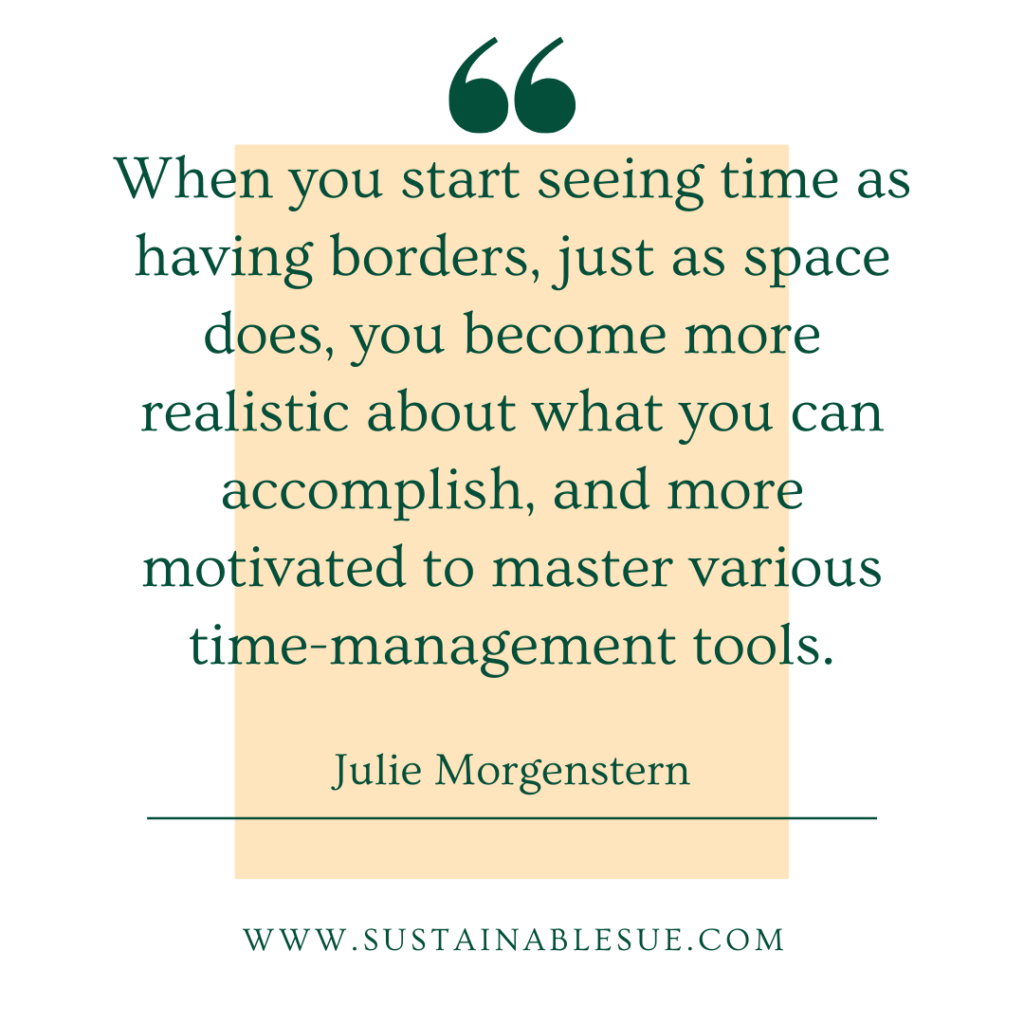Rightsizing the Busyness Thunderdome
Welcome to September, otherwise known as the Busyness Thunderdome. There are approximately 1,269,348 things to do. Plus a fall festival. Which leads to today’s topic:
How to remain whole amidst distractions of life. Let’s rightsize the Busyness Thunderdome.
Current state
If you are like most women in the Sustainable Sue audience, the current state of life looks a little bit like this.
- The school year is largely underway. At least enough that the newness has worn off and tears have been shed over homework.
- Halloween candy and costumes have been out for 2 months already.
- Thanksgiving decorations and Christmas music are ready to bust through the door.
- There are even quiet whispers about New Years Eve plans and your 2024 word of the year.
Resist the urge to throw up your hands and declare the year over mid-September. Take a deep breath. There are roughly 100 days left of the year – almost a third of the year left.
This is not an essay about digging in and sprinting to the finish. It is about staying true to your desires to live a life you don’t need to escape when life gets chaotic and distracting.
Life is made up of big and little things. The trick is to keep them the size you intend them to be.
Don’t let the big things shrink and float off.
Don’t let the little things swell into oversized monsters.
Here are 5 suggestions about adjustments you can make to rightsize your Busyness Thunderdome.
Reprioritize.
You cannot do everything. And more importantly, your kids cannot do everything just because you want them to. Or you think they want to. If you can identify a pain point, I encourage you to start there – even if it means changing priorities.
For example, you are a family that prioritizes honoring commitments. Yet Johnny cries every time he comes home from soccer games and practices. His coach yells at him for not doing things right, Johnny knows he is not good at soccer, and no one on his team talks to him because they all know each other from being on the team together last year. You have observed all of this to validate Johnny’s concern. Then you have the invisible load of Johnny’s stomach ache most of the day leading up to practice and games and his sadness for the half day after games and practice. You have choices. One of those choices is to reprioritize and let Johnny quit soccer. If your focus is exercise, maybe the deal is trading the soccer team for soccer in the park or back yard with the siblings.
Removing one thing – even if it requires a priority shift – can help you rightsize the busyness. This is especially valuable when the busyness is not getting the intended result.
Move.
I know, I hear it already, “I am living in a Busyness Thunderdome, and you want to ADD something?!”
Stay with me, friends.
This is not a big hairy exercise program or challenge. This is moving for 20 minutes. It could be a yoga channel on YouTube before anyone wakes up or a walk during that work Zoom where you only sit and listen anyway. What about riding the elliptical or stationary bike at the office gym during lunch.
Low volume, lower intensity. This is not your exercise, this is moving for the sake of mental health.
Be still.
Ah, the flip side to suggestion #2. If you though moving was hard, I bet you think being still is harder. I know I do.
When a friend of mine was getting sober, she had such a hard time sitting still, her sponsor had her literally sit on her hands for 5 minutes. Monkey mind is a real thing. Our society rewards people – especially women – who are constantly in motion.
It all serves you until it doesn’t. Rightsize the chaos by checking out for a few minutes each day. It does not have to be meditation, just be still.
Delegate to the floor.
In the middle of a crazy busy season is not the time for the nice-to-have projects. The ceiling doesn’t HAVE to get painted the week leading up to the Fall Festival you are the chair person for. You don’t have to join the meal train during the week you are also volunteering at the church’s Brunswick stew sale. This is not the time to ask your spouse to pick up slack and delegate to her. Its the time to cut it loose and delegate to the floor. If it is not a hell yes, it is a no.
Jot it down.
Sometimes there are no strategies that can help you in real time. You are blown, but just need to get through it. I have been there too so I know it feels terrible. My strategy for this is to have Today Burned Out Sue help create Future Sustainable Sue. We all have a time machine at our finger tips and it is your email. I will draft an email to myself to not sign up for an annual committee and schedule it to send around the time the email requesting volunteers goes out. I include ALL of my feelings (this is for my eyes only) so I can be reminded of how it feels to be this drained.
Sustainable You Reflections
- How are you doing right now? No, like really – how are you?
- Look at your calendar for this week and next. List the things you are doing out of obligation (i.e., the things that are not a hell yes).
- Which of the above strategies might work for one of those obligations.
If you are not ready to take action to rightsize yet, its ok. This exercise will help get you in the mindset to do it next time.
Until next time remember to create productive results in a way that you can sustain and that sustain YOU.









